 |
 |
 |
| |
Impact of baseline K103N or Y181C on the virological response to the NNRTI TMC125: analysis of study TMC125-C223
|
| |
| |
Reported by Jules Levin
15th Intl HIV Drug Resistance Workshop
June 13-17, 2006
Sitges, Spain
J Vingerhoets, K Janssen, J Welkenhuysen-Gybels, M Peeters, K Cao-Van, L Tambuyzer, B Woodfall, M-P de Bethune
Tibotec BVBA, Mechelen, Belgium
AUTHOR CONCLUSIONS
- Baseline FC to TMC125 in this highly treatment-experienced population increased with a higher number of NNRTI mutations.
- The presence of Y181C, but not K103N, appears to be associated with a slightly higher FC value for TMC125, at baseline
- a possible confounding factor is the higher number of NNRTI mutations in samples with Y181C - however, it is observed with Y181C alone as well
- confirmed by in-vitro data using a panel of 7,582 clinical isolates (Virco).
- Although the presence of Y181C, but not K103N, appeared to be associated with decreased virologic response, the analysis is confounded by other factors, including a higher number of NNRTI mutations in the group with Y181C.
- In an adjusted analysis, there were no marked differences between responses with or without K103N or Y181C.
- Larger sample sizes, needed to identify key baseline combinations of mutations associated with decreased virologic response, will be obtained from the DUET trials.
ABSTRACT
Background
TMC125 is a novel NNRTI with a high genetic barrier to the development of resistance and in-vitro and in-vivo activity against NNRTI-resistant HIV.
TMC125-C223 is a randomised controlled phase IIb dose-finding study of TMC125 in heavily pretreated patients with documented NNRTI resistance and
33 primary protease inhibitor (PI) mutations at baseline. In this study, TMC125 showed significant antiviral efficacy at 24 weeks with a mean change in
viral load (VL) of -1.18 log10 copies/mL vs -0.19 log10 in control (p<0.05). In a previous intent-to-treat (ITT) analysis, an association between a higher
number of NNRTI mutations, the baseline fold change (FC) for TMC125 and virological response at 24 weeks was observed.
Methods
The effect of the NNRTI mutations K103N and Y181C on the virological response at 24 weeks in patients receiving TMC125 800mg twice-daily (n=79) was determined on observed data.
Results
Both K103N and Y181C were each present at baseline in 29 out of 79 patients, and always observed in combination with one to four other NNRTI mutations. Ten of these 48 patients carried both K103N and Y181C. The number of additional NNRTI mutations was similarly distributed for the samples with K103N or Y181C. The median TMC125 FC for all patients was 1.95. The median TMC125 FC for patients with and without K103N or with and without Y181C was 1.70 and 1.95 or 4.50 and 1.10, respectively. In an unadjusted analysis, patients with K103N at baseline achieved a mean reduction in VL of 1.43 log10 copies/mL, similar to the 1.40 log10 reduction in patients without K103N, and similar to the overall response of -1.41 log10 in all patients. Patients with Y181C at baseline achieved a mean 0.86 log10 reduction, which was lower than the 1.70 log10 reduction in patients without Y181C.
Conclusions
These data showed that TMC125 retained activity in the presence of multiple NNRTI mutations, including K103N and Y181C, where current NNRTIs were
not expected to be active. The presence of Y181C, in combination with other NNRTI mutations, seemed to be associated with higher FC values for
TMC125. Although the presence of Y181C, but not K103N, appeared to be associated with decreased virologic response, the observed analysis presented
in the abstract was confounded by other factors, including a higher number of NNRTI mutations in the group with Y181C. In an adjusted analysis, there
were no marked differences between responses with or without K103N or Y181C. Additional data are required to confirm these findings.
Abstract updated to reflect recent analysis
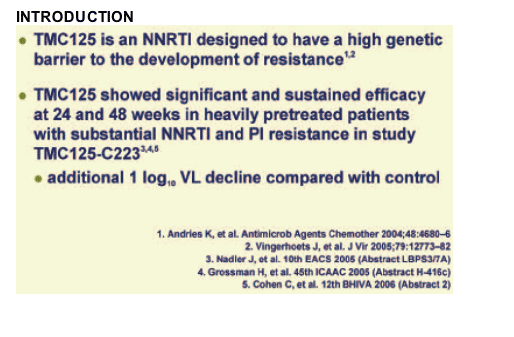
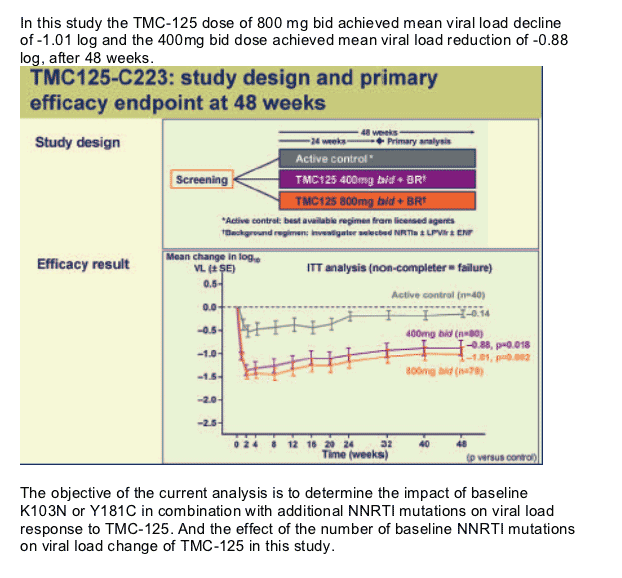
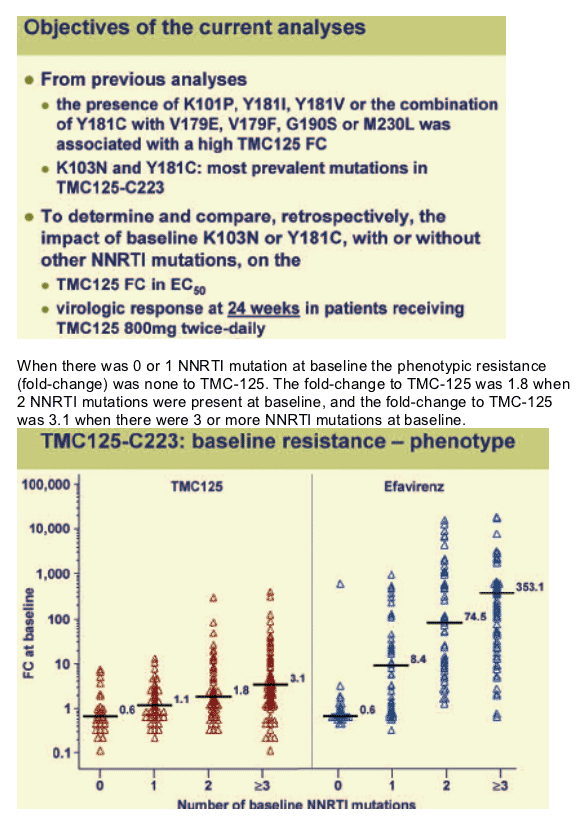
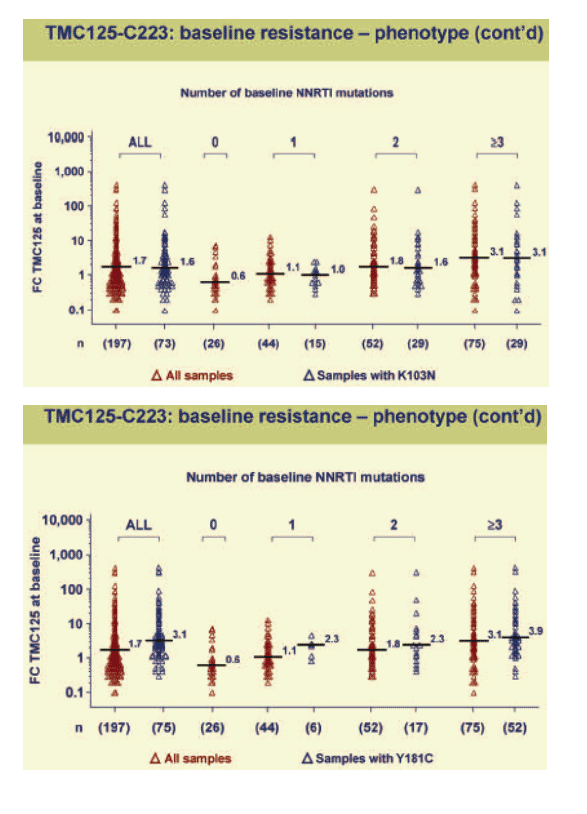
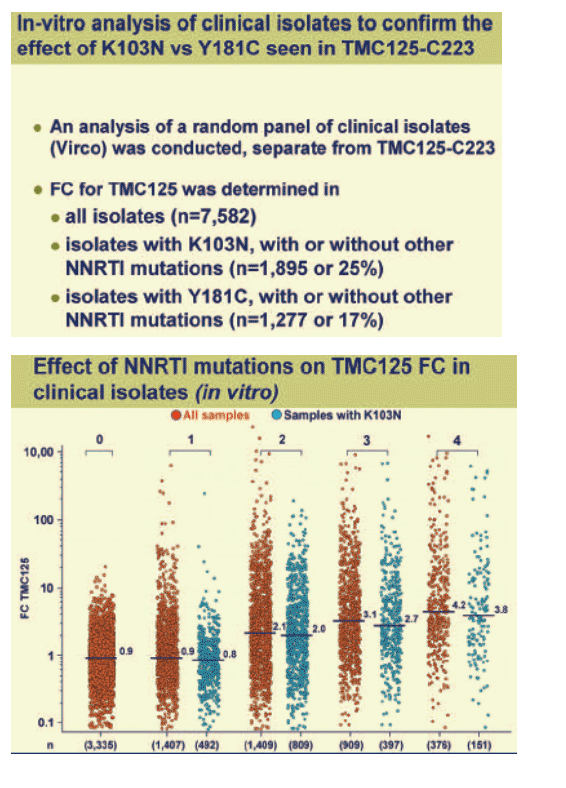
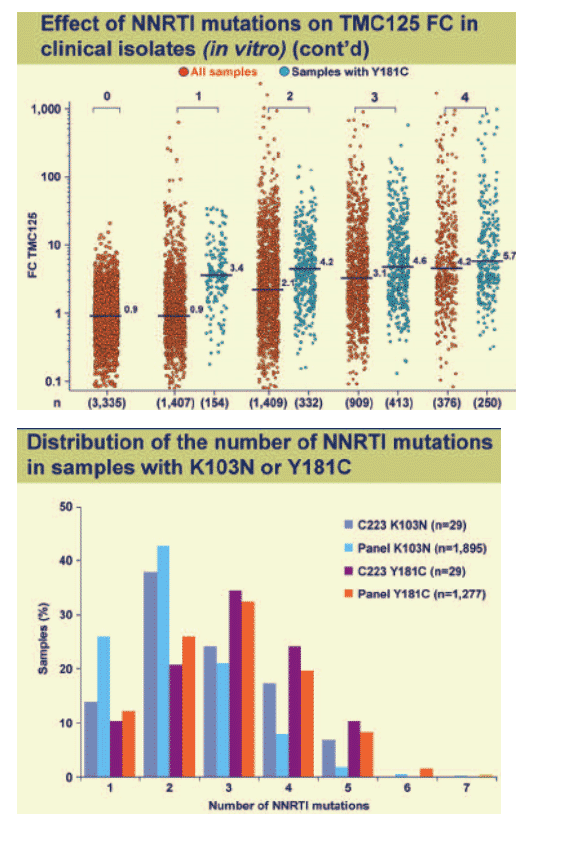
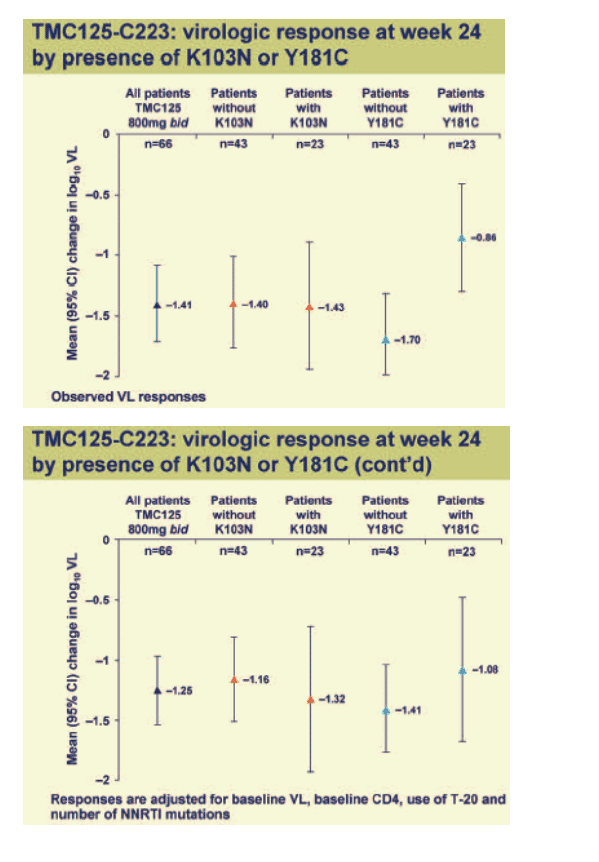
|
| |
|
 |
 |
|
|